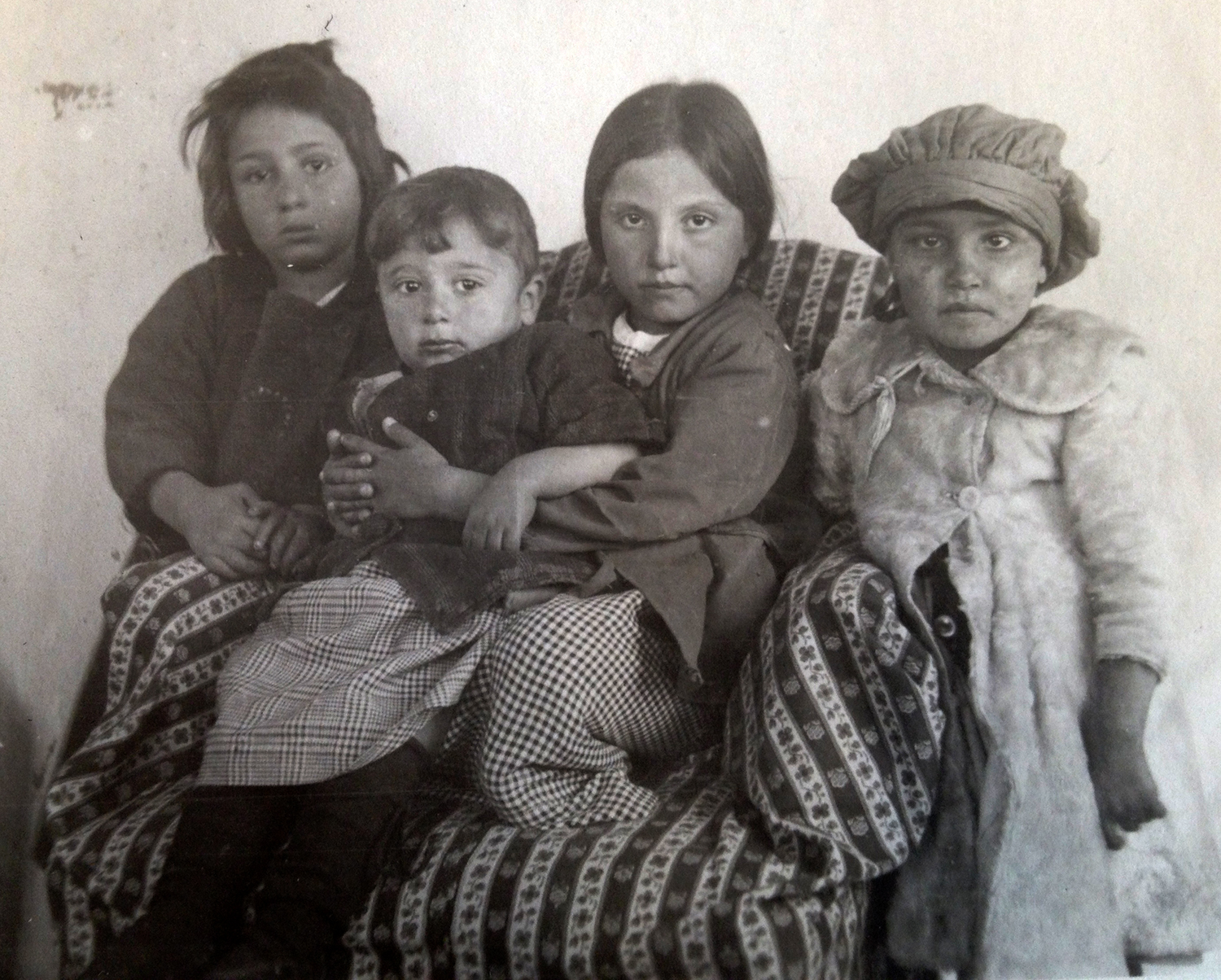
Genocide perpetrated against the Armenian population of the Ottoman Empire was both gender-oriented and age-oriented. While the Armenian male population was generally killed before or at the beginning of deportation, women and children, as well as being massacred, were also subjected to different forms of physical and sexual violence during the death marches. Children and young women were also forcibly transfered to the enemy group.
Deportation caravans consisting mainly of women and children intentionally were not guarded such that Turks, Kurds and Arabs were able to take women and children by force. They were stolen, bought and sold during deportations; they were taken into sexual slavery, placed in harems, brothels, different Muslim households (often in the homes of those who had killed their family members) with all the devastating consequences such practices imply. Armenian women and young girls (often children) were also forcibly married.
Thousands of Armenian orphans, or children separated from their families, were collected by the Government and either placed in state orphanages or given to Muslim households. The Government also encouraged the rural population to take women and children from the deportation caravans as slaves, shepherds, housekeepers, or as children. Unprecedented numbers of Armenian children and young women were transferred to Muslim groups (according to different sources nearly 200.000).
The widespread practice of forced transfer of young Armenian women and children and their Islamization was also recognized at the legal level. After the defeat of the Ottoman Empire in the First World War, Article 4 of the Mudros armistice
inter alia stipulated ‘All Armenian interned persons and prisoners [are] to be collected in Constantinople and handed over unconditionally to the Allies.’ Furthermore, Article 142 of the Treaty of Sèvres recognized the
terrorist regime which has existed in Turkey since November 1, 1914 and the forced conversions, the Turkish Government undertook to assist in the search for and deliverance of all disappeared, carried off, interned people or those placed in captivity persons, the Turkish Government also undertook to facilitate the operations of mixed commissions appointed by the League of Nations to receive the complaints of the victims themselves, their families or their relations, to make the necessary enquiries, and to order the liberation of the persons in question.
After the defeat of the Ottoman Empire in the First World War, collecting those transferee-survivors of the Armenian Genocide and returning them to their nation became the goal and mission of numerous individuals as well as Armenian and international organizations.
The League of Nations established after WWI also became involved in the Armenian tragedy by virtue of Article 23 of the Covenant, which had entrusted the League “with the general supervision over the execution of agreements with regard to the traffic in women and children.” On February 1921 the Commission of Enquiry for the Protection of Women and Children in the Near East was established on a purely humanitarian basis with a view to informing the Council as to the present situation in Armenia, in Asia Minor, in Turkey, and in the territories adjourning their countries regarding deported women and children.
The Commission opened its headquarters in Aleppo, where Karen Jeppe was nominated as the League of Nations Commissioner, and Constantinople with the League Commissioners William Kennedy and Emma Cushman. According to the League of Nations Commissioners there were still 73,350 Armenian orphans in different Muslim institutions and homes.
The Aleppo branch of the Enquiry Commission carried out the rescue and rehabilitation of the Armenians held in Muslim captivity in the French zone of occupation where, by the estimates of Karen Jeppe, 30,000 Armenians were still in bondage. Nomadic Muslim people of the region were reluctant to free their Armenian captives. After a long passage of time Armenian survivors were sometimes also reluctant to leave the homes of their “saviors” or “captors” because of strong human bonds established between the survivors and their masters, children born of Muslim fathers, security concerns, fears about fleeing, and the awareness that no Armenian was left alive, etc. Others were afraid of admitting their Armenian identity because of fear of the repetition of 1915’s events or punishment if they were caught running away.
Little children were raised as Muslim and sometimes didn’t even know their real identity. However, there were thousands who, after hearing about the rescue missions, left their “prisons” willingly.
The Aleppo Rescue Home or Reception House as mentioned in the League of Nations documents was established first by the American Near East Relief organization in 1918 and then administered by the League of Nations. It was situated in the northern outskirts of Aleppo. With the help of its Armenian and Arab agents and several stations established in different parts of the region (Djirablous, Ras al-Ayn, Mardin, Deir el-Zor, Hasitche, Rakka, Bab, Arabpounar, etc.), League Commissioner Karen Jeppe was able to shelter in the Reception Home thousands of Armenians, who were rescued or who rescued themselves from Muslim captivity.
Karen Jeppe succeeded in liberating thousands of Armenians not only from Arab Bedouins but from neighboring Turks and Kurds. Liberation or rescue was performed through negotiation, bribery, kidnapping or urging the Armenians to flee by themselves. Usually they were ransomed by their rescuers, at a rate of 0,50-2 Turkish gold depending on the territory. Sometimes the amount of ransom reached 10 Turkish gold, however this was very high.
The liberated Armenians were admited to the Reception Home where they were provided with food, clothes and medical care. The details of the liberated people were sent to newspapers, churches and Armenian unions in order to find their relatives.
They were interviewed and each interview was registered in a notebook. 1464 individual intake surveys of the rescued Armenian women, children, and young men are located in the League of Nation Archives in Geneva. Those surveys include a photograph of a rescued person and some biographical data about parents’ names, place of origin, age and date of admission to the House.
This was followed by a short life-story about the 1915 events, his / her captivity and rescue. The future fate of the inmate is written on the back of the paper (see an example in Photo 1 and 2).
The material was prepared based mostly on the League of Nations archives.
Dr. Edita Gzoyan
AGMI Deputy Scientific Director
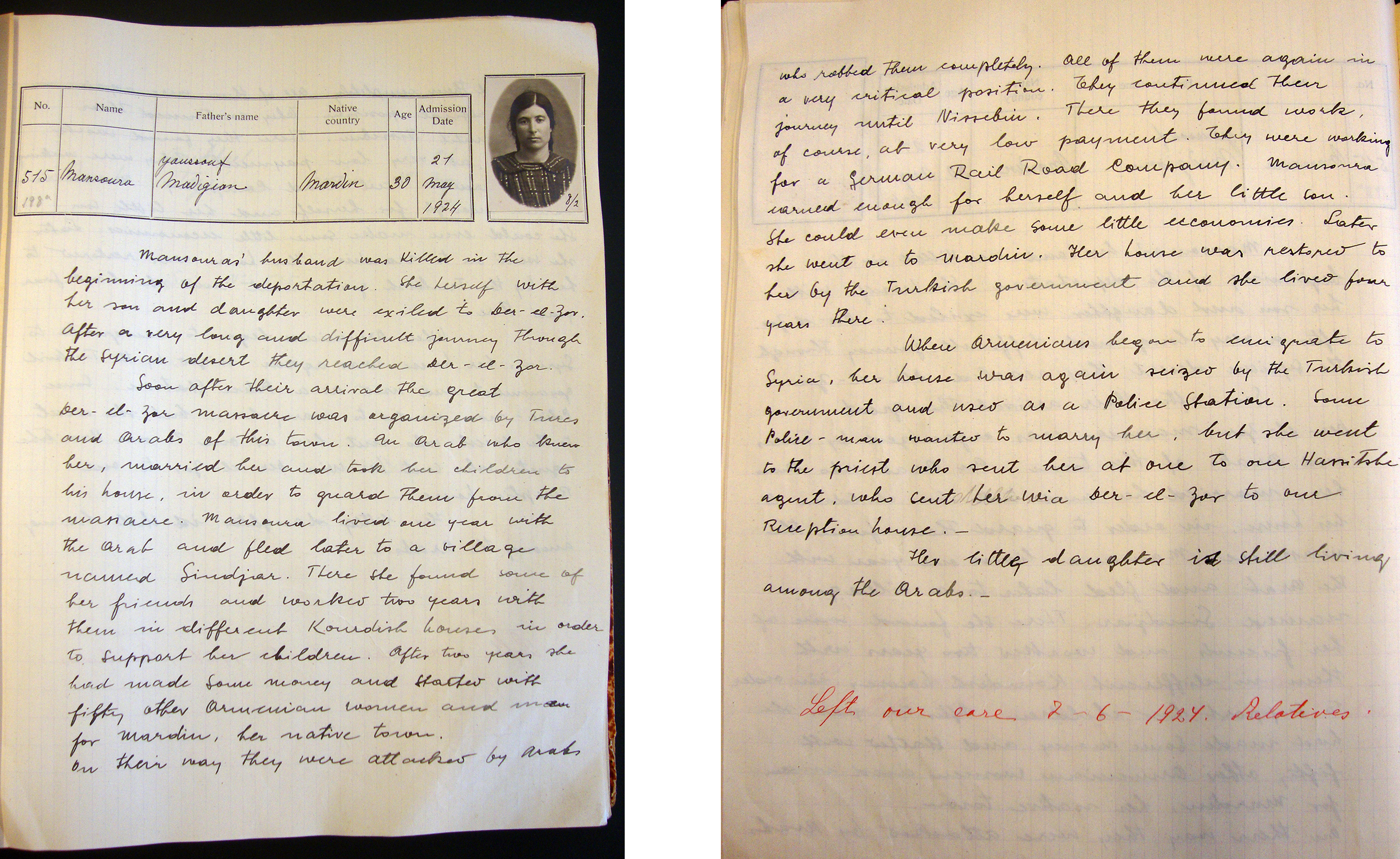
Survey of Mansoura Yaussouf Madigian, Photo 1 (1)
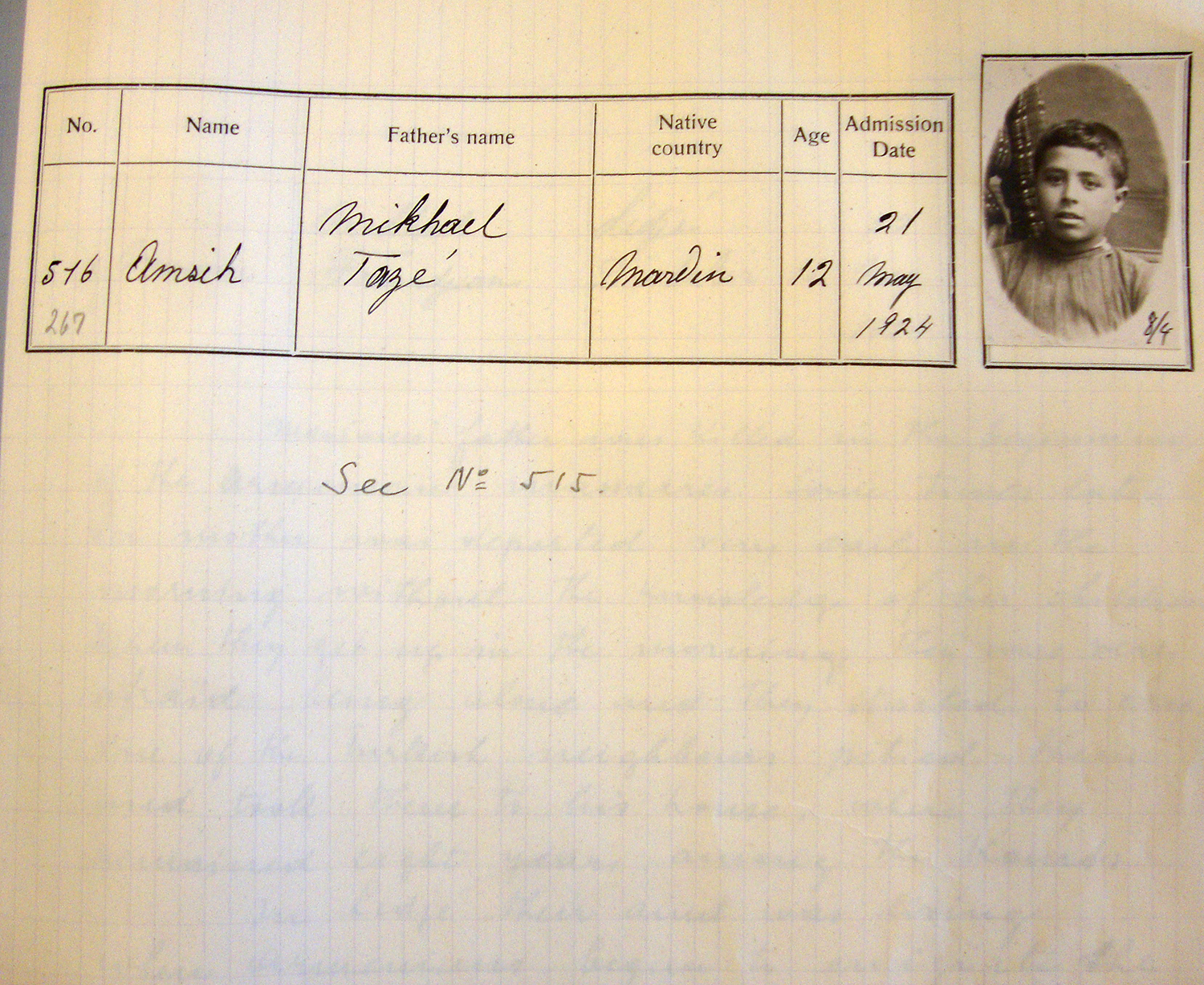
Amsih Mikhael Taze’, Mardin, 12 years old, son of Mansoura Mardigian
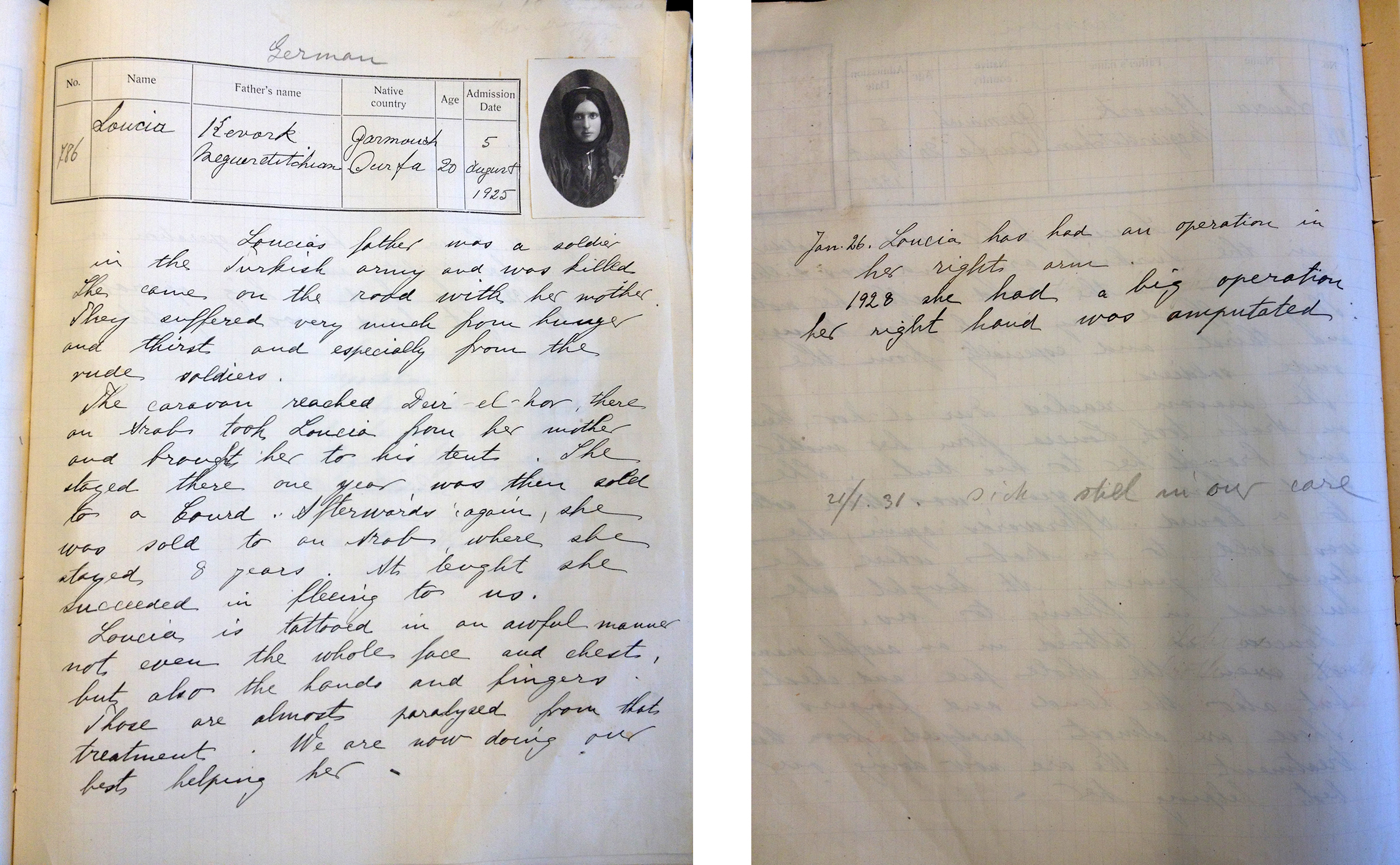
Survey of Loucia Kevork Meguerditchian, Photo 2 (2)
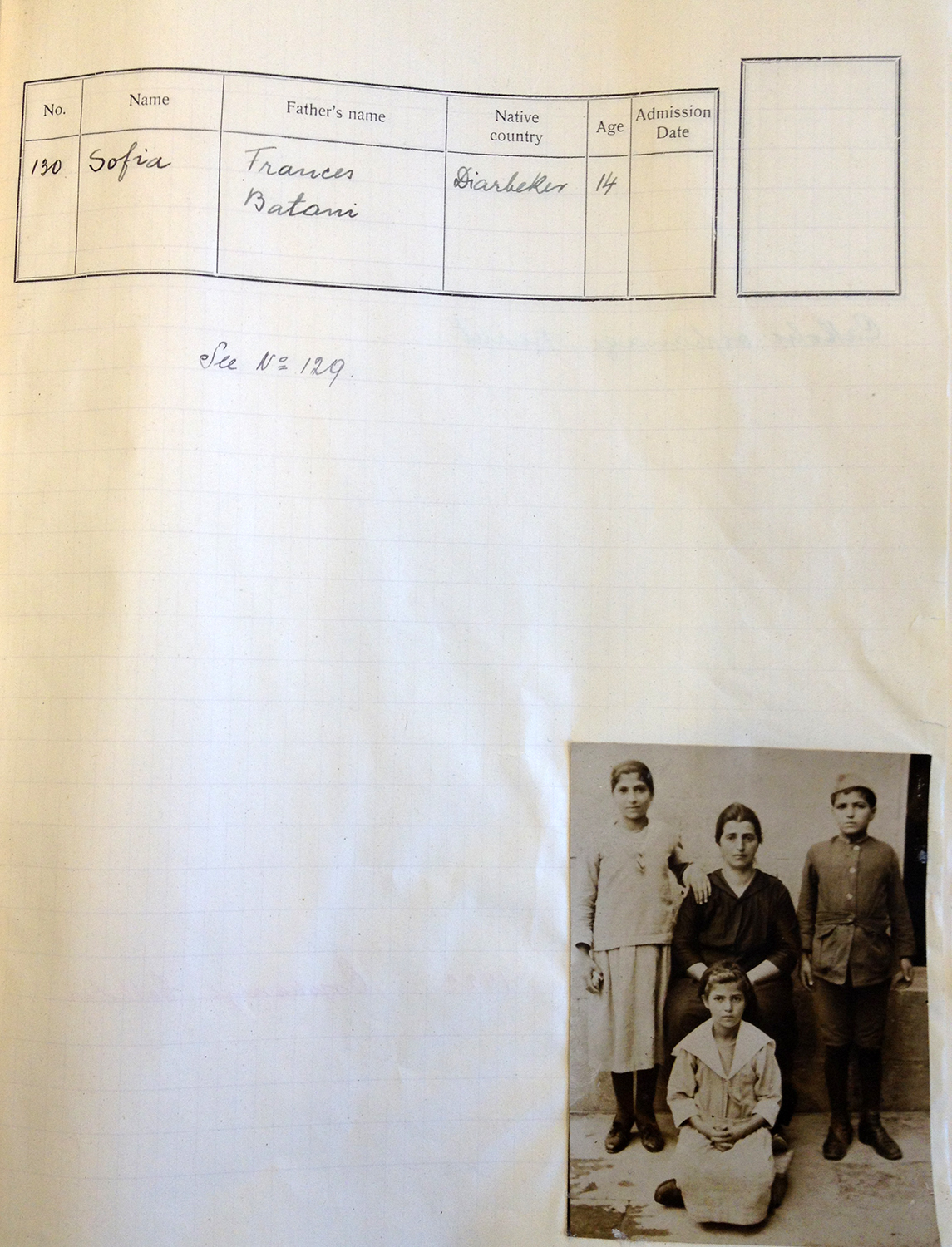
Mother with her three children in Aleppo Rescue Home

Armenian children of Aleppo Rescue Home
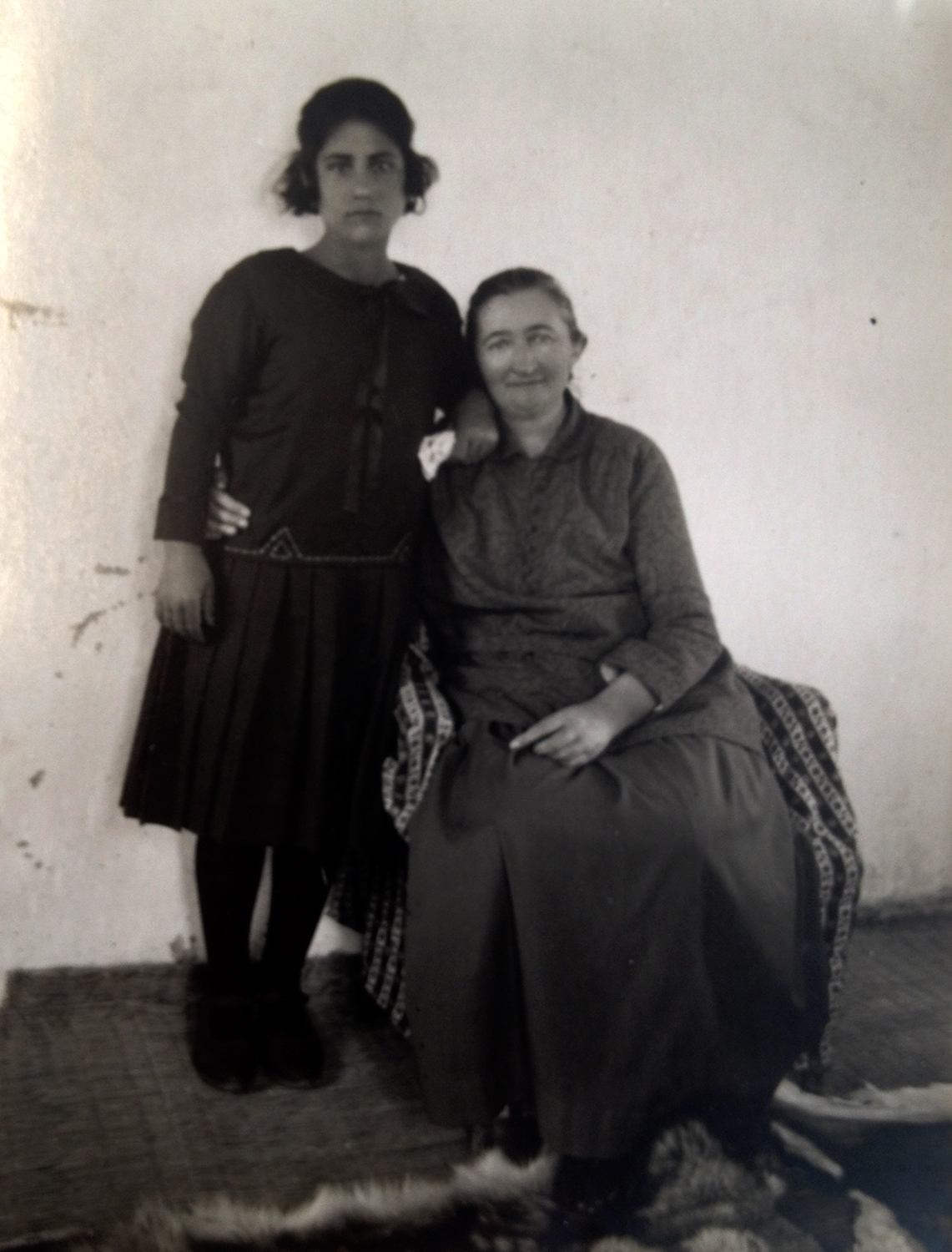
Karen Jeppe with one of the girls from the Aleppo Rescue Home
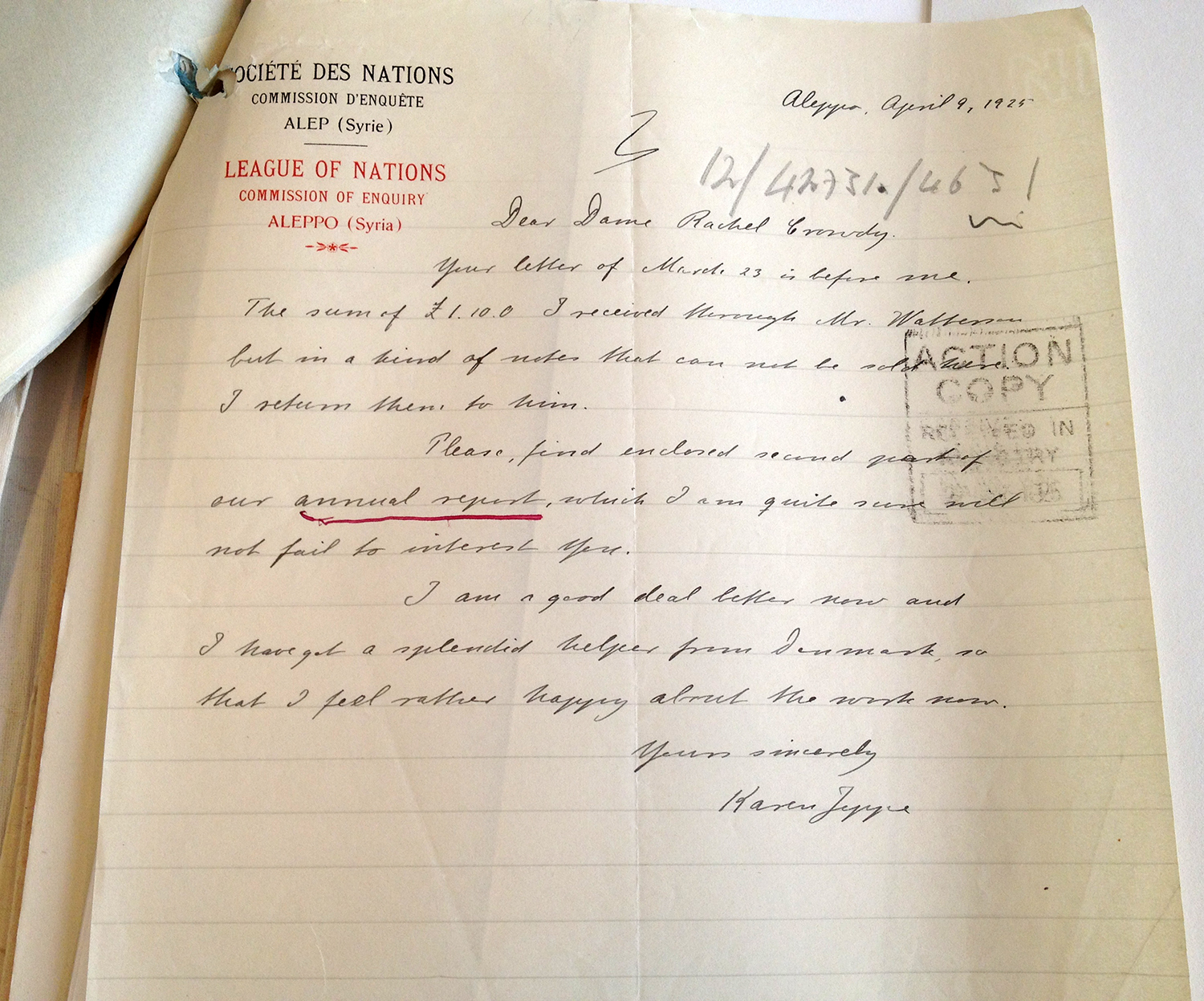
The letter of Karen Jeppe addressed to the head of the League of Nations’ Social Section Dame Rachel Crowdy
___________________________________________
1. Mansoura’s husband was killed in the beginning of the deportation. She herself with her son and daughter were exiled to Der-el-Zor. After a very long and difficult journey through the Syrian desert they reached Der-el-Zor.
Soon after their arrival the great Der-el-Zor massacre was organized by Turcs and Arabs of this town. An Arab, who knew her, married her and took her children to his house, in order to guard them from the massacre. Mansoura lived one year with the Arab and fled later to a village named Sindjar. There she found some of her friends and worked two years with them in different Kourdish houses in order to support her children. After two years she had made some money and started with fifty other Armenian women and man for Mardin, her native town. On their way they were attacked by Arabs who robbed them completely. All of them were again in a very critical position. They continued their journey until Nissebin. There they found work, of course, at very low payment. They were working for German Rail Road Company. Mansoura earned enough for herself and her little son. She could even make some little economies. Later she went on to Mardin. Her house was restored to her by the Turkish government and she lived four years there.
When Armenians began to emigrate to Syria, her house was again seized by Turkish government and used as a Police Station. Some Police-man wanted to marry her, but she went to the priest who sent her at once to our Hassitshe agent, who sent her via Der-el-Zor to our Reception house.
Her little daughter is still living among the Arabs.
Left our care: 2-6-1924, Relatives
2. Loucia's father was a soldier in the Turkish army and was killed. She came on the road with her mother. They suffered very much from hunger and thirst and especially from the rude soldiers. The caravan reached Deir ez-Zor, there an Arab took Loucia from her mother and brought her to his tent. She stayed there one year, was then sold to a Courd (Kurd, sic.). Afterwards (again), she was sold to an Arab, where she stayed 8 years. At length she succeeded in fleeing to us.
Loucia is tattooed in an awful manner not even the whole face and chest, but also the hands and fingers. Those are almost paralyzed from that treatment. We are doing our best helping her.
Jan. 26. Loucia has had an operation in her right arm.
1928 she had a big operation, her right hand was amputated.
21/1.31 sick, still in our care





